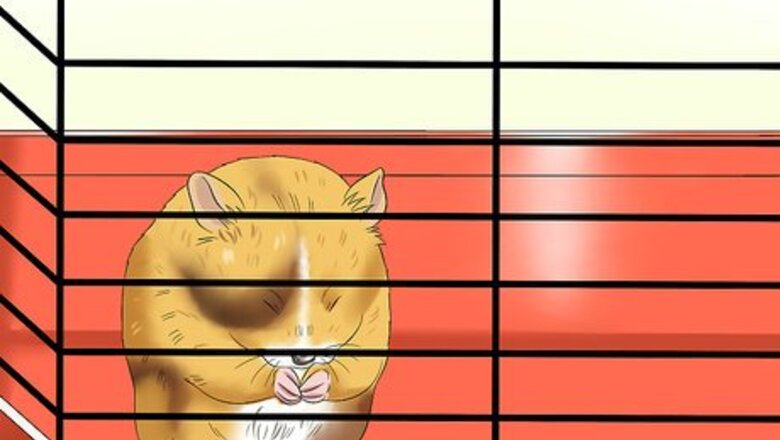
views
Holding a Syrian Hamster
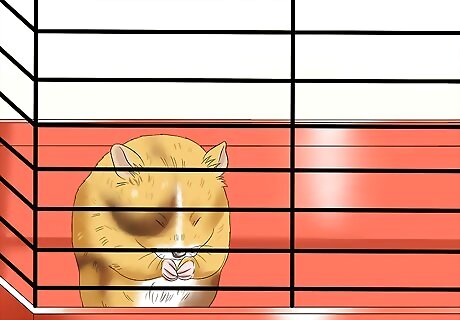
Let your hamster get used to his environment. If you have just brought your Syrian hamster home, he is going to need some time to adjust to his new surroundings. Let him explore his cage for a day or two before you start trying to hold him. During this time, he will mark his territory by washing his face and grooming a lot (‘scenting’). Do not mistake scenting for nervousness or anxiety. This is his way of settling in and knowing where things are in his cage. Approach his cage slowly and talk to him in a low and soothing voice while he is adjusting to his new home. It won’t take long for him to become used to your voice and even respond to it.
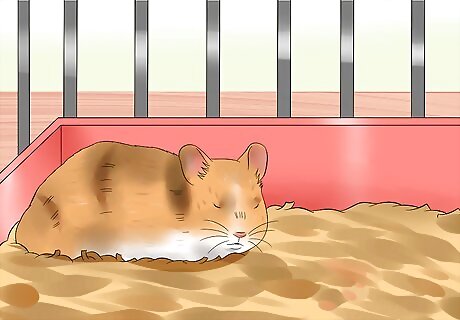
Wait until your hamster is awake. When your Syrian hamster has settled in, begin to work on picking him up and holding him. It is important that you wait until he is fully awake—usually about 30 minutes after he’s woken up. Hamsters tend to sleep very deeply, so it would be frightening for him to be woken up suddenly—he may think you’re a predator. Hamsters are nocturnal animals, so your hamster will be fully awake in the evenings. If you would like to wake him up, speak to him in a soft voice. However, it is better to wait until he has woken up on his own.
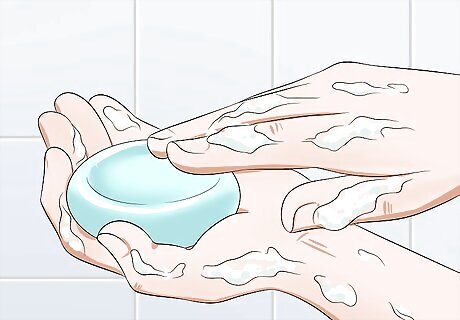
Wash your hands. Since hamsters do not see very well, they use their noses to ‘see’ things in their environment. For example, if you have more than one Syrian hamster, the scent of one hamster on your hands could make the other hamster feel like he is being attacked. Wash your hands between handling each hamster. Wash your hands with unscented soap before holding your hamster(s). Fruit-scented soap could make your hands look like a tasty piece of fruit to you hamster!
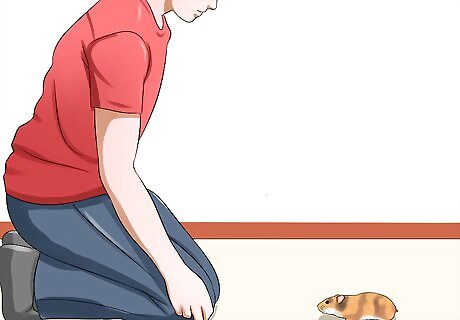
Sit on the floor. Hamsters can easily injure themselves if they fall from at least 20 cm (8 inches) above the floor. Sitting on the floor will put you close to a flat surface, and allows your hamster to fall into your lap in case he jumps off your hands. It may help to move his cage down to the floor before picking him up so you can already be seated when you reach into his cage.
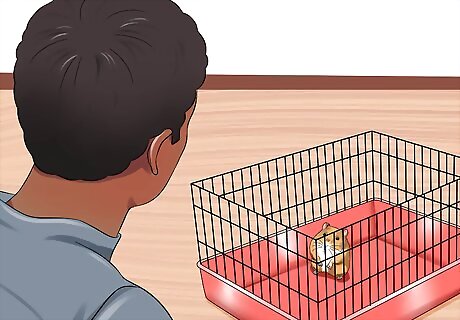
Reach into your hamster’s cage. Even though your hamster is small, you should give yourself plenty of space to reach in and lift him out of his cage. Take the entire lid off the cage. Syrian hamsters are not known to be high jumpers, so you won’t have to worry about your hamster jumping out of the cage when the lid is off.
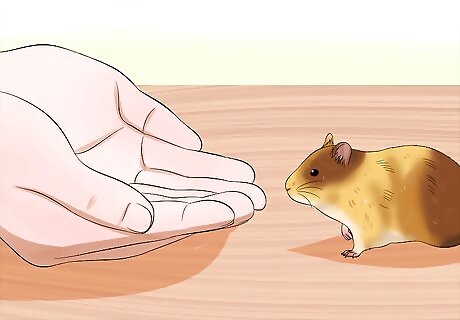
Hold your hands like a scoop. How you hold your hands is important when learning how to hold your hamster. Since hamsters are small, you could hold one hand like a scoop. However, it may be easier to use both hands, with one hand slightly behind the other to give his backend more support. Keep your fingers close together rather than spreading them apart to help prevent the hamster from biting you. Your hamster may jump off your hands before you have the chance to lift him up. That’s okay—he may be scared of being in your hands at first. Let him jump on and off your hands as much as he wants until he’s comfortable with being held. Your hamster may nibble your hand as a way to investigate something new in his environment. Be careful not to jerk your hand away—this would frighten him and possibly make it harder for you to hold him. Be mindful that it may take a few days before your hamster will feel comfortable enough for you to lift him out of his cage.
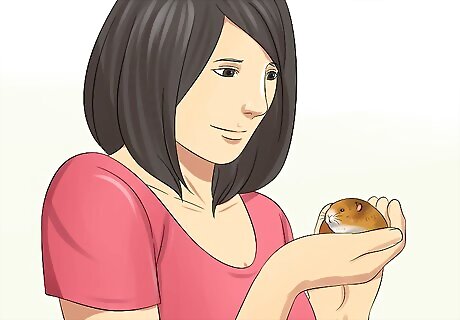
Lift your hamster out of his cage. Initially, your hamster may be frightened by being lifted out of his cage. To make him feel a little more comfortable, face him towards you. Being able to look at you will give him a steady frame of reference when he is in the air. Also, he will also be less likely to jump. Your hamster could become disoriented if you lift him up with his back to you. Don’t be surprised if your hamster bites your hands when you lift him up. These are little ‘warning’ bites to let you know he is feeling alarmed. Blowing a soft puff of air in his face should stop the biting. Holding your hamster close to you may lessen his anxiety, as well as make him less likely to jump. If your hamster continues to bite your hands, or seems really uncomfortable with being held, gently lower him back into his cage. Continuing to hold him when he’s uncomfortable will frighten him even more. Gently curving your fingers around his body could get him more comfortable with being held.
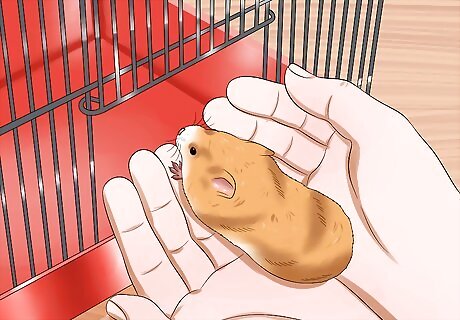
Place him back in his cage. Initially, your hamster may not enjoy being held for very long. When you sense he is getting uncomfortable or he is trying to bite, gently lower him back into his cage and give him a treat. To prevent him from falling and injuring himself, hold him in your hands until your hands reach the bottom of the cage. Depending on your hamster’s comfort level, you may have to place him back in his cage sooner than you want to. That’s okay—it may take him a while to be comfortable with being held. The first few times you hold him, hold him for about a minute. Gradually increase the time as he becomes more comfortable with you.
Avoiding Handling Mistakes
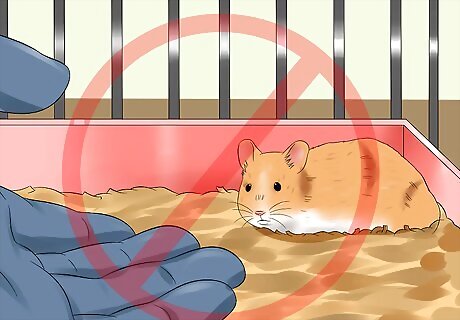
Do not leave your hand in your hamster’s cage. For most hamsters, it is recommended to place your hand in the cage to get the hamster comfortable with it. However, this approach does not work for Syrian hamsters, since they are so territorial. Leaving your hand in your Syrian hamster’s cage could negatively affect his emotional and physical health. Your hand’s presence could increase your hamster’s stress level. Instead of eventually coming to your hand and accepting treats, he will probably just run and hide. For Syrian hamsters, it is recommended to start holding them as soon as their acclimation period is over.
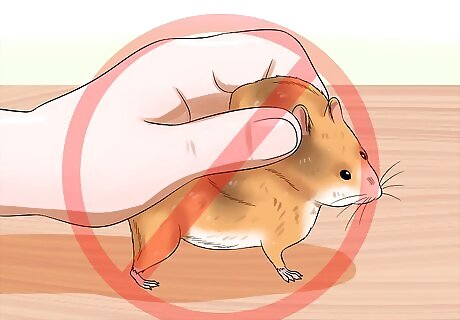
Do not grab or scruff your hamster. Picking your hamster up with your fingers could frighten your hamster and cause him to nip and bite at you. Scruffing your hamster by grabbing the skin at the base of his head is not only frightening to him, but also dangerous—it can put a lot of pressure on his head and possibly cause his eyes to bulge out.
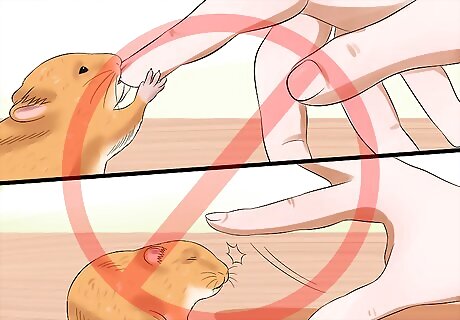
Do not punish your hamster if he bites. If your hamster bites your hand, you may think that punishing him will keep him from doing it again. However, hamsters do not respond well to punishment because they cannot link their action to a certain consequence. The puff of air in his face is unpleasant enough to stop the biting behavior without actually punishing or hurting him. Do not try to pull him off your finger, or, even worse, flick him off when he bites. Trying to pull him off will cause him to bite even harder, and flicking him off could seriously injure him.













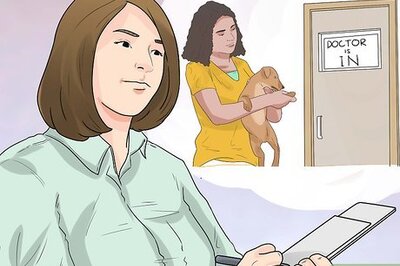






Comments
0 comment